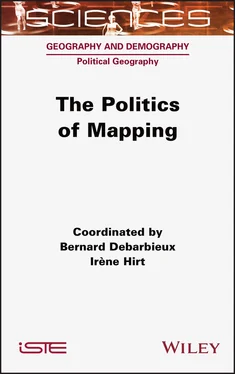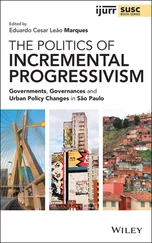27 xxxiv
28 1
29 2
30 3
31 4
32 5
33 6
34 7
35 8
36 9
37 10
38 11
39 12
40 13
41 14
42 15
43 16
44 17
45 18
46 19
47 20
48 21
49 22
50 23
51 24
52 25
53 26
54 27
55 28
56 29
57 30
58 31
59 32
60 33
61 34
62 35
63 36
64 37
65 38
66 39
67 40
68 41
69 42
70 43
71 44
72 45
73 46
74 47
75 48
76 49
77 50
78 51
79 52
80 53
81 54
82 55
83 56
84 57
85 58
86 59
87 60
88 61
89 62
90 63
91 64
92 65
93 66
94 67
95 68
96 69
97 70
98 71
99 72
100 73
101 74
102 75
103 76
104 77
105 78
106 79
107 80
108 81
109 82
110 83
111 84
112 85
113 86
114 87
115 88
116 89
117 90
118 91
119 92
120 93
121 94
122 95
123 96
124 97
125 98
126 99
127 100
128 101
129 102
130 103
131 104
132 105
133 106
134 107
135 108
136 109
137 110
138 111
139 112
140 113
141 114
142 115
143 116
144 117
145 118
146 119
147 120
148 121
149 122
150 123
151 124
152 125
153 127
154 128
155 129
156 130
157 131
158 132
159 133
160 134
161 135
162 136
163 137
164 138
165 139
166 140
167 141
168 142
169 143
170 144
171 145
172 146
173 147
174 148
175 149
176 150
177 151
178 152
179 153
180 154
181 155
182 156
183 157
184 158
185 159
186 160
187 161
188 162
189 163
190 164
191 165
192 166
193 167
194 168
195 169
196 170
197 171
198 172
199 173
200 174
201 175
202 176
203 177
204 178
205 179
206 180
207 181
208 182
209 183
210 184
211 185
212 187
213 188
214 189
215 190
216 191
217 192
218 193
219 194
220 195
221 196
222 197
223 198
224 199
225 200
226 201
227 202
228 203
229 204
230 205
231 206
232 207
233 208
234 209
235 210
236 211
237 212
238 213
239 214
240 215
241 216
242 217
243 218
244 219
245 220
246 221
247 222
248 223
249 224
250 225
251 226
252 227
253 228
254 229
255 230
256 231
257 232
258 233
259 234
260 235
261 236
262 237
263 239
264 240
265 241
SCIENCES
Geography and Demography, Field Director – Denise Pumain
Political Geography , Subject Head – Frédéric Giraut
Coordinated by
Bernard Debarbieux
Irène Hirt

First published 2022 in Great Britain and the United States by ISTE Ltd and John Wiley & Sons, Inc.
Apart from any fair dealing for the purposes of research or private study, or criticism or review, as permitted under the Copyright, Designs and Patents Act 1988, this publication may only be reproduced, stored or transmitted, in any form or by any means, with the prior permission in writing of the publishers, or in the case of reprographic reproduction in accordance with the terms and licenses issued by the CLA. Enquiries concerning reproduction outside these terms should be sent to the publishers at the undermentioned address:
ISTE Ltd
27-37 St George’s
Road London SW19 4EU
UK
www.iste.co.uk
John Wiley & Sons, Inc.
111 River Street
Hoboken, NJ 07030
USA
www.wiley.com
© ISTE Ltd 2022
The rights of Bernard Debarbieux and Irène Hirt to be identified as the authors of this work have been asserted by them in accordance with the Copyright, Designs and Patents Act 1988.
Any opinions, findings, and conclusions or recommendations expressed in this material are those of the author(s), contributor(s) or editor(s) and do not necessarily reflect the views of ISTE Group.
Library of Congress Control Number: 2021951707
British Library Cataloguing-in-Publication Data
A CIP record for this book is available from the British Library
ISBN 978-1-78945-067-5
ERC code:
SH2 Institutions, Values, Environment and Space
SH2_1 Political systems, governance
SH2_11 Human, economic and social geography
SH2_12 GIS, spatial analysis; big data in political, geographical and legal studies
Bernard DEBARBIEUX and Irène HIRT
University of Geneva, Switzerland
I.1. Theoretical and conceptual debates
The focus on the relationship between mapping 1, on the one hand, and politics or power, on the other hand, is certainly not new, or even recent. For centuries, particularly in the Christian, Chinese and Arab-Muslim worlds, the people who commissioned maps (princes, ministers or heads of state) and the cartographers clearly believed that maps must, first and foremost, serve the objectives of knowledge and the control of territories by sovereigns, armies and state administrations.
In the Western world, the proximity between maps and political power became less visible around the 18th century, when the discourse among cartographers began to focus on the techniques of production, the accuracy of the representation and the scientific value of the knowledge produced. This shift became even more pronounced in the 20th century when the scientific analysis of the map corpus and reflection on map production itself became essentially guided by a belief in the progress of techniques and knowledge. This led to the triumph of verism in the representation of the Earth’s surface, accuracy in the representation of data and optimization in the communication of knowledge. This threefold objective was achieved through the increasing sophistication of modern societies, techniques and policies. A few key figures in cartographic thinking in the second half of the 20th century embodied this ambition. Among these figures, Bertin (1983 [1967]) reflected on the visual and semiological effectiveness of maps. However, from the 18th to the 20th centuries, this discourse on the efficiency of maps was often voiced by authors working directly or indirectly for political authorities, sometimes even within their institutions. The added value maps held for the exercise of power tended to escape critical reflection, since it became consubstantial with cartographic knowledge, on the one hand, and with government know-how, on the other hand.
I.1.1. The “Harleyian turning point”
The emergence of an alternative research program with this type of reflection as its objective can be traced back to the 1970s and 1980s. Referred to as “critical cartography”, it is largely in line with the French, Italian, Portuguese and Spanish approaches to the “social and political uses of maps”. This program proposes a critical interpretation of cartographic production in history, highlighting the socially constructed dimension of the map and its capacity to support strategies and relationships of power/knowledge as conceptualized by Michel Foucault. The break with the hitherto dominant approaches is remarkable. The main innovation of the 1970s and 1980s involved breaking away from the modernist and evolutionist narrative to question that which had been largely left out of the field of reflection, namely the political, but also social and contextual dimensions of cartographic commissioning and production. The historian of cartography Brian Harley emerged as a leading figure in this breakthrough (Blakemore and Harley 1980; Harley 1988a, pp. 277–312, 1988b, 2001). The publication of his article “Deconstructing the Map” (1989) had a major influence on thought about the “power of maps”. His work has become a classic despite its theoretical and methodological shortcomings, which are noted by even Harley’s greatest advocates, as Reuben Rose-Redwood (2015) pointed out in the special issue of the journal Cartographica published in 2015: “Deconstructing the Map: 25 years on”.
Читать дальше













